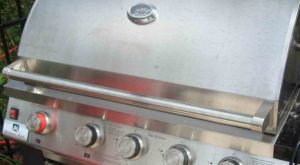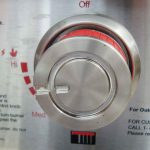 Natural Or Propane Gas Grill: Know Which Is The Better Choice
Natural Or Propane Gas Grill: Know Which Is The Better Choice
By Linda Henry
If you are looking for gas grills, the first thing you should bear in mind is the specific type or model that’s going to meet your needs. You need to determine whether you like a propane-powered grill or a natural gas grill. So what are the basic things that you should know about these two grilling appliances so that you can properly choose between the two of them? The most important thing to consider is the advantages and disadvantages of each of the two types.
For a natural gas grill, one of the utmost advantages that you can enjoy from choosing this is its affordable cost. Everyone wants to save money but be sure that you choose a model that’s made with durable material so you won’t end up with regrets later on. Aside from cheap prices, these types of grills are also cost-efficient because of the type of fuel that they use. In addition, natural gas has cleaner burn leftovers compared to propane-powered models.
A propane-powered grill on the other hand is more expensive. However, if you really love cooking outdoors, then this type is good for you. This is because this type of grill will allow you to have a gas supply that’s extended to your backyard area through the help of a licensed gas fitter.
BBQ grills come in many different makes and models. The most common materials used in making these cooking appliances include aluminium, stainless steel, porcelain-coated steel or cast iron, and plain cast iron. Among these different materials, stainless steel is considered is the top choice. It is simply because with stainless steel models are really easy to clean and maintain. They are easier to clean compared to their contemporaries. Stainless steel is hard and sturdy. In addition, it heats up faster and rarely develops rust.
An important aspect to consider in choosing a good model is the BTU. The BTU is the power centre of your grill. This is vital as it determines the heating capacity of the grill. The most widely used for home is a grill with a total of 600 square inches and a heating capacity of around 10,000 BTU. That one already sounds ideal for most home users.
Always take a closer look in at the material of your grill. Some grills have a superficial stainless steel appearance. Be sure to check the rest of the model’s body because it might be made out of only cast iron or aluminium. The ideal choice is one that’s purely made from stainless steel and comes with a built-in ignition system and a couple of burners.
Make the right choice in purchasing gas grills with high quality features by browsing the pages of the Georgetown Fireplace & Patio website.
Article Source: http://EzineArticles.com/?expert=Linda_Henry
http://EzineArticles.com/?Natural-Or-Propane-Gas-Grill:-Know-Which-Is-The-Better-Choice&id=6352428



